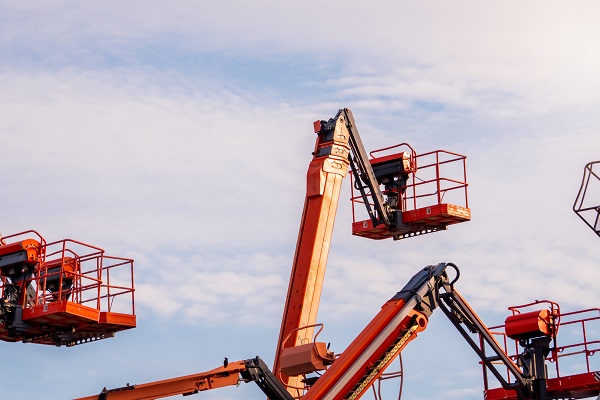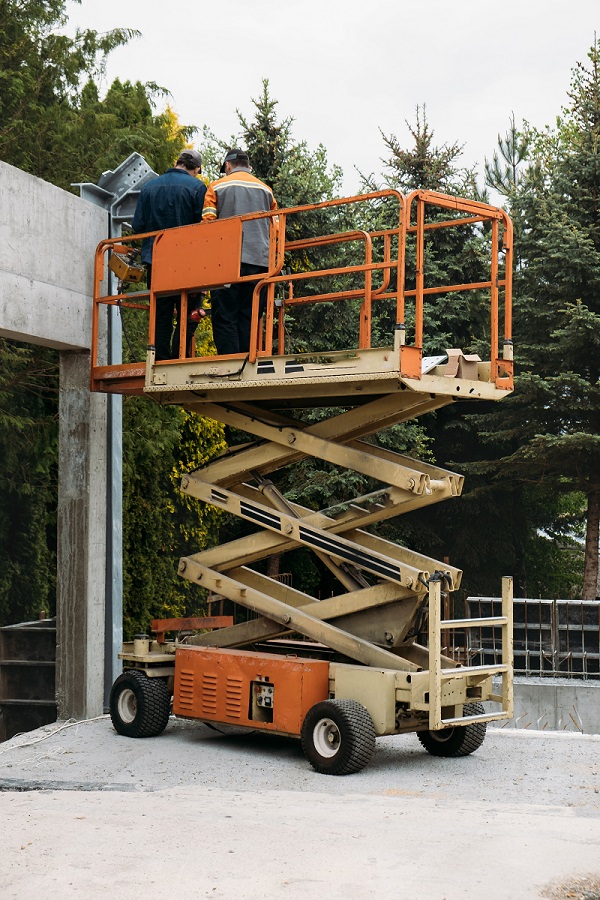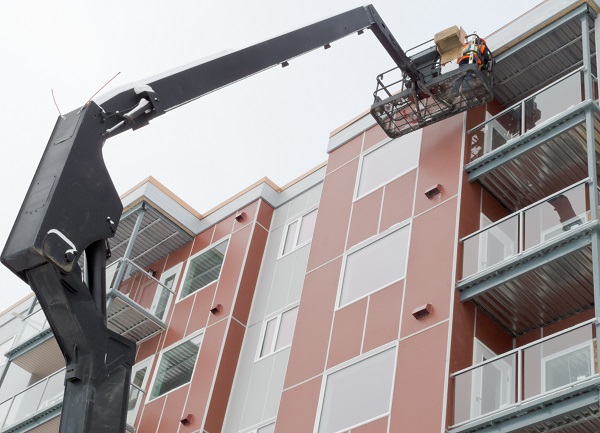
MEWP is an acronym for mobile elevated work platform. By definition, a MEWP is a platform designed to lift workers or equipment, often used in situations where work at height is required. In the construction industry, MEWPs are used to access hard-to-reach places such as telegraph poles and scaffolding.
There's a diverse range of mobile elevated work platforms on the market, but almost all of them will require you to wear some kind of height safety equipment, such as a safety harness. In this article, we're going to take a closer look at some of the most common MEWPs in the business before we delve into the types of safety equipment you should be using when you're working with a MEWP.
MEWP Definitions
Under the current standards, MEWPs can be defined/classified in two ways. Mobile elevated work platforms come in many shapes and sizes. There's so much variation because MEWPs can be used in a range of different environments and for different jobs. When defining a MEWP, you'll need to include:
Classifying MEWPs by group
In order to understand which group a MEWP falls into, you need to look at the platform location in relation to the tipping line. The tipping line is the boundary created by the machine's wheels or stabilisers. MEWPs fall into one of these two groups:
Group A
MEWPs that fall into group A have a platform that moves up and down while staying inside the machine's tipping lines. This means the work platform stays parallel to the base of the machine and never extends left or right. These MEWPs are the safest to use because they are at minimal risk of tipping over when in use.
Group B
MEWPs that extend outside of the tipping lines belong in group B. Their elevating work platform is usually on an arm that is capable of moving up, down, left, and right. Unlike group A, where the lifting platform remains parallel to the chassis of the machine, group B MEWPs have work platforms that can extend in any direction. This creates a tipping hazard.
What are the different types of MEWP?
Every MEWP has a type as well as a group, and there are three main types of MEWP. MEWP types are detirmined by the way the machine travels horizontally. For example, how does it move from the warehouse to the work location? Can it be driven or pushed? Let's take a look at the 3 main types of MEWP in more detail:
Type 1
Type 1 MEWPs can only move when they're in the stowed position. This means that the work platform cannot be extended when you decide to move the machine.
Type 2
Type 2 MEWPs can be moved while the platform is in the extended position. They can be moved using controls that are found on the chassis of the machine (not on the work platform).
Type 3
Type 3 MEWPs are quite similar to type 2 MEWPs. The key difference is that type 3 MEWPs can be moved using controls on the work platform. This gives users the flexibility to relocate the MEWP while it's in use.
All MEWPs fall into one of these groups and one of these types. However, there can be a wide range of variance from one machine to another. Let's take a look at some examples of MEWPs you may have come across in the workplace to see what classification they fall under.

An electric scissor lift will fall into MEWP group A and type 3 because it features a vertical lift platform that stays parallel with the base of the machine, and it can be moved while elevated and controlled from within the work platform.

An articulated boom lift falls into MEWP group B and type 3 because its platform extends outside of the tipping point and because the platform can be moved while it's extended in the air.
Correct safety equipment for MEWPs
Now you know what a MEWP is! Whatever kind of MEWP you are working on, it's vital that you invest in the right safety equipment before you work at height. Here at Safety Harness Direct, we offer a wide range of products that are perfect for use on MEWPs. Use the buttons below to shop!
Cherry Picker Harnesses > Safety Harness Kits >
If you have any questions about what a MEWP is, or how our safety equipment can be used on MEWPs, don't hesitate to drop us an email - sales@safety-harness.com.

